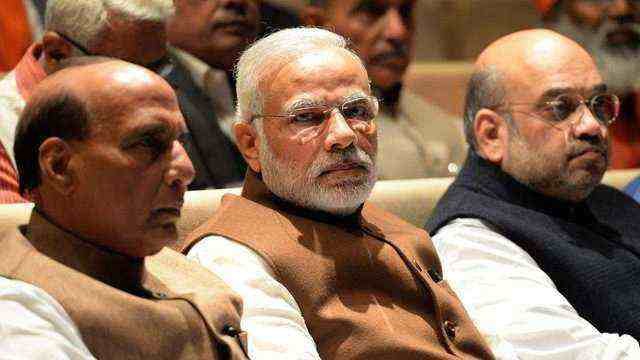
The approach to the Interim Budget has been interesting. As it is an interim one, there has been no negative disruption caused in the tax rates. But the proposals have worked around lowering the tax burden of individuals at all levels. At the same time expenditures have been increased in all critical areas with the rationale being that they are required and cannot wait till June or July. This is one of the most exciting budgets because it only gives and does not take anything from anyone. Normally when concessions are given, someone pays for it. But this time no one pays for the same as it has been worked out through the numbers. Let us see how this works.
The budget size has been increased sharply by 13.5 percent when in the past it goes up by just about 8-10 percent. This provides a larger leeway to provide funds in different areas. So the Budget has increased expenditure on the transfer of income to farmers by Rs 55,000 crore, subsidies by Rs 35,000 crore, MGNREGA by Rs 5,000 core and capex by Rs 20,000 crore. By retaining the fiscal deficit at 3.4 percent which is the same as in FY19 there can be no complaint about the final outcome. Overall borrowings have increased but the net borrowing is just Rs 50,000 crore over last year which should pose no strain on liquidity. Therefore, this is an ideal budget where no one is worse off and lots are better off.
A critical balancing factor is disinvestment which has been increased to Rs 90,000 crore with the revised number for FY19 being retained at Rs 80,000 crore as this can be possible only in case there are inter-PSU purchases, the disinvestment programme has virtually become one where surpluses of PSUs get transferred to the government in this manner. Therefore, any debate on whether the disinvestment number is credible or not is not really relevant as the target will always be achieved.
An interesting observation is that the non-tax revenue has also increased with the dividend component going up from Rs 1.22 lakh crore FY19 (B) to Rs 1.19 lakh crore in FY19 (R) to Rs 1.36 lakh crore in FY20. This includes a large part from banks, FIs and RBI which is to be Rs 83,000 crore in FY20. This is significant because as banks are making losses, the bulk has to come from the RBI which will probably pay an interim dividend or transfer this year and a higher amount next year. The indication is that the committee looking into the reserves of RBI will have a story to tell which will blend with the requirement in the budget. Also, the fact that the budget makes no provision for PSB recapitalisation in FY20 suggests that when a decision is taken to transfer RBI reserves to the government, they would be used for this purpose.
It is understandable that no change has been invoked in the tax rates relating to corporates or the stock market such as LTCG as it would be left to the next government. However, the individuals, as well as the SMEs, have been given a benefit which is curious as it does lead to a certain loss of revenue which is made up by stronger growth in income. This is probably the big bet where it is assumed that the GDP growth will be swift, leading to higher collections especially on GST which will justify these tax cuts and higher expenses.
With the issue of basic income catching headlines, this budget has brought it in through the backdoor by targeting the marginal farmers and providing an income of Rs 6,000 per annum for 12 crore of them. The outlay of Rs 75,000 crore is staggering and when combined with Rs 60,000 crore under MGNREGA means that almost 5 percent of the overall budget is now a cash payment to farmers. It can be argued whether or not Rs 500 per month means anything as such for a family given that even going by the outdated World Bank rule of $1 a day (it is now $1.90), a family of five would require Rs 10,500 to be out of poverty. Hence, at best this is a supplement and cannot be an income which can sustain a household. The silver lining is that if this can be successfully implemented then it can lay the foundation of a long term scheme which is viable.
The government’s focus on capex has remained undiluted which is positive and, at Rs 3.36 lakh crore, with focus on roads and railways, is commendable. But this cannot be expected to drive the economy in a big way and unless there is private investment forthcoming will again add a delta to capital formation and not drive the initiative. It must be remembered that Rs 1.0 lakh crore is on defence which could be spent mainly on imports.
The budget is hence a non-controversial one which has used some strong assumptions of growth to justify revenue collections even though only benefits have been given. Individuals cannot complain because there are only sops. Corporates have been left with a neutral impact and some sectors may gain if people spend more on specific goods. On expenditure, the poor appear to gain and no one loses and hence is again generally positive in impact. Overall borrowing in net terms will not disturb the markets and liquidity, and hence interest rates will remain untouched. And if the numbers do not add up in February 2020, the disinvestment block is always there which will support the 3.4 percent fiscal number. This is how one can view the Budget.


.jpeg)

